Japanese cuisine has a reputation for its exquisite taste and elegant presentation. So how come there are dishes prized for their sliminess? And worse, that some people can not live without for breakfast?
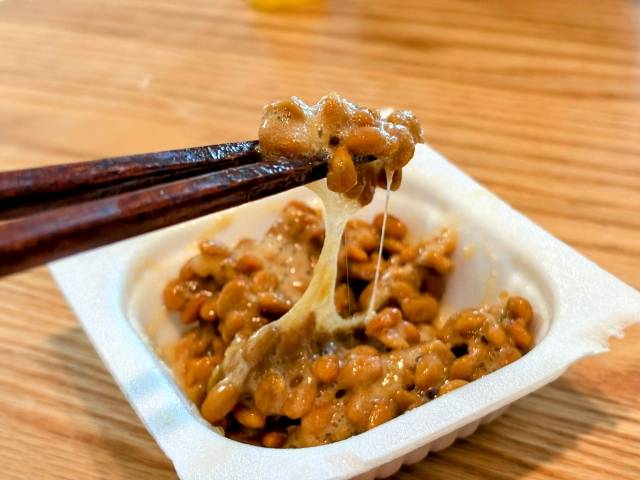
With the reputation of Japanese cuisine for its exquisite presentation and refined taste, you may as a visitor be surprised that one of the most popular parts of Japanese cuisine is so appreciated because it is exactly the opposite, at least in the eyes of visitors.
You may come across the most prominent ingredient at breakfast. A small, flat styrofoam box at the side of your meal contains small brown beans. It does not smell bad, slightly nutty. The best way to remove the plastic film on top is to spear it with a chopstick and pierce a corner of the box, pulling out the film as you push the chopstick through. Add the sauce (usually comes in a small sachet on top of the plastic film) and mustard if it is to your taste.
And then, whip it. Whip it good! With your chopsticks. The beans should form a whitish foam that doubles the content of the box, creating slimy threads which remind more than anything than something that might have come out of your nose.
If you can swallow the sliminess, the taste is nutty more than anything else, quite good as topping on rice, especially with an umeboshi or a raw egg. This is natto (納豆), the king among Japanese slimy foods.
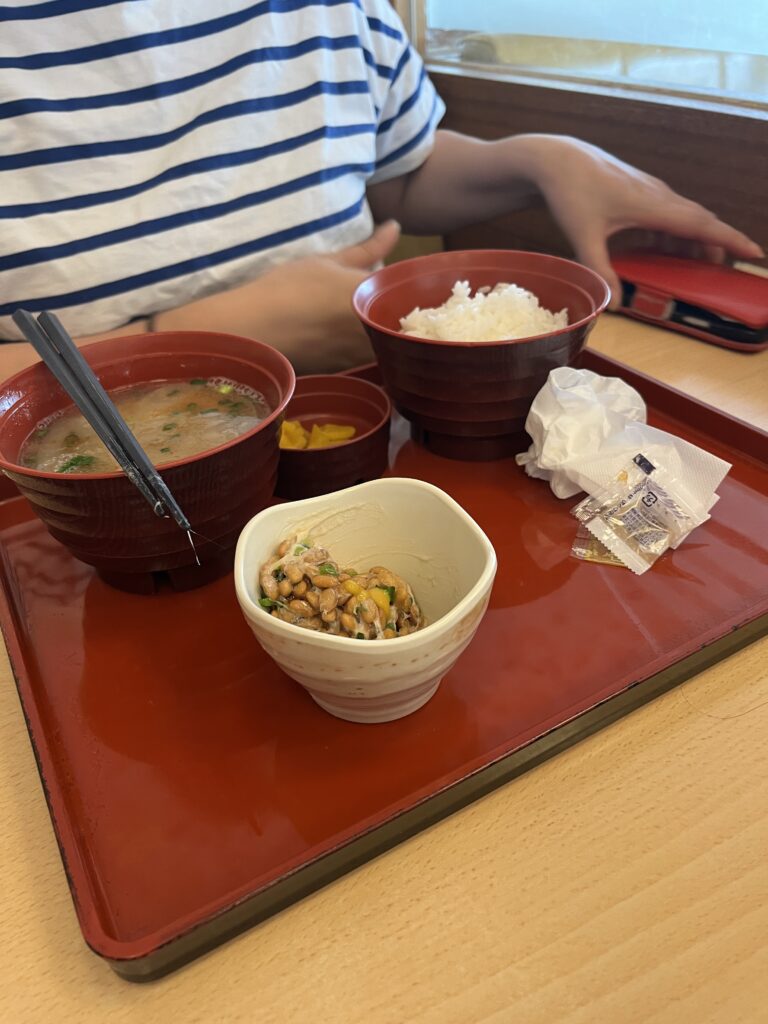
The sliminess is caused by the bacteria used to preserve the beans (traditionally in a rice straw packet). The bacteria are quite aggressive and if you leave one of the white styrofoam packets open in the fridge overnight, all your food will be equally slimy. At the same time, the bacteria are unique, and were the subject of the first biotech patent in the world. Wash your dishes and utensils carefully if you are self-catering, and remember that it is OK to throw away soiled plastic in the burnable garbage.
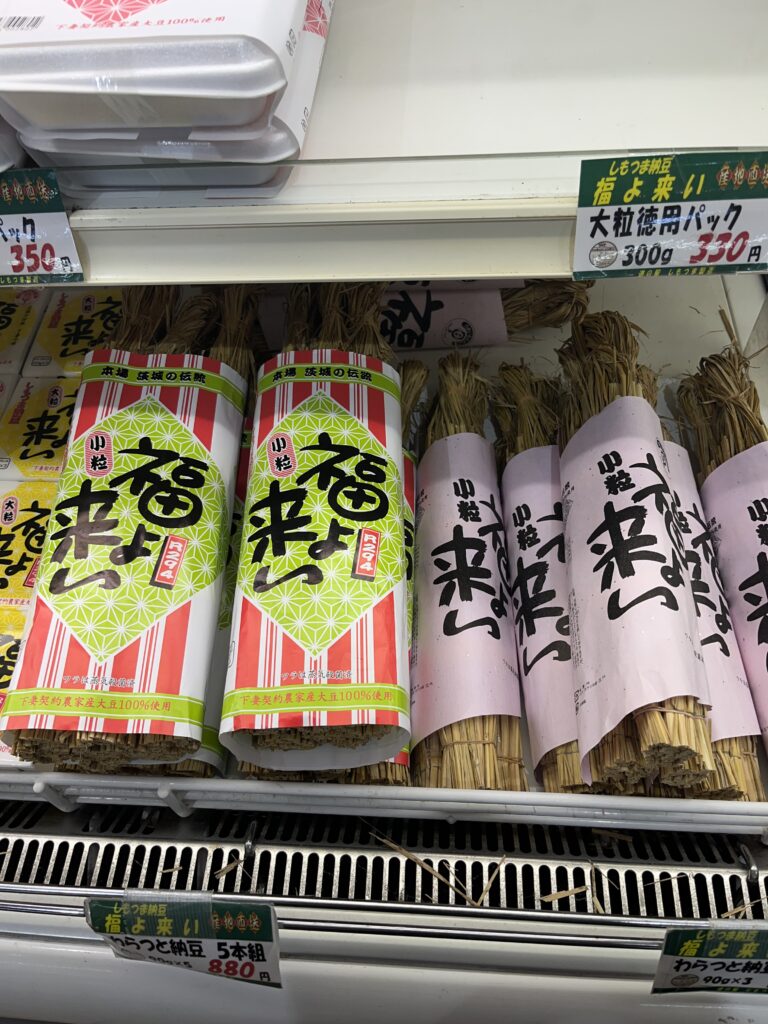
If you visit the natto shelf in a normal Japanese supermarket, the variety can be bewildering. There is natto made from large beans, natto made from small beans, natto made from clipped beans (usually used in natto-zushi), natto made from local beans, natto msde from beans from Hokkaido, natto with ume flavor, natto with egg flavor, natto with probiotic bacteria – any kind of natto you can think of. The further you get from Ibaraki, the less variety there will be.
Natto is quintessentially Japanese, and you will be able to get natto with your breakfast from Okinawa to Hokkaido. Natto is not one of the regional foods which there are plenty in Japan. But it is most popular in its home, in Ibaraki prefecture north of Tokyo. There, it is so popular that the cheerleaders at local baseball matches perform a ”Neba-Neba” (ねばねば) dance illustrating how it becomes extra slimy when you whip it up.
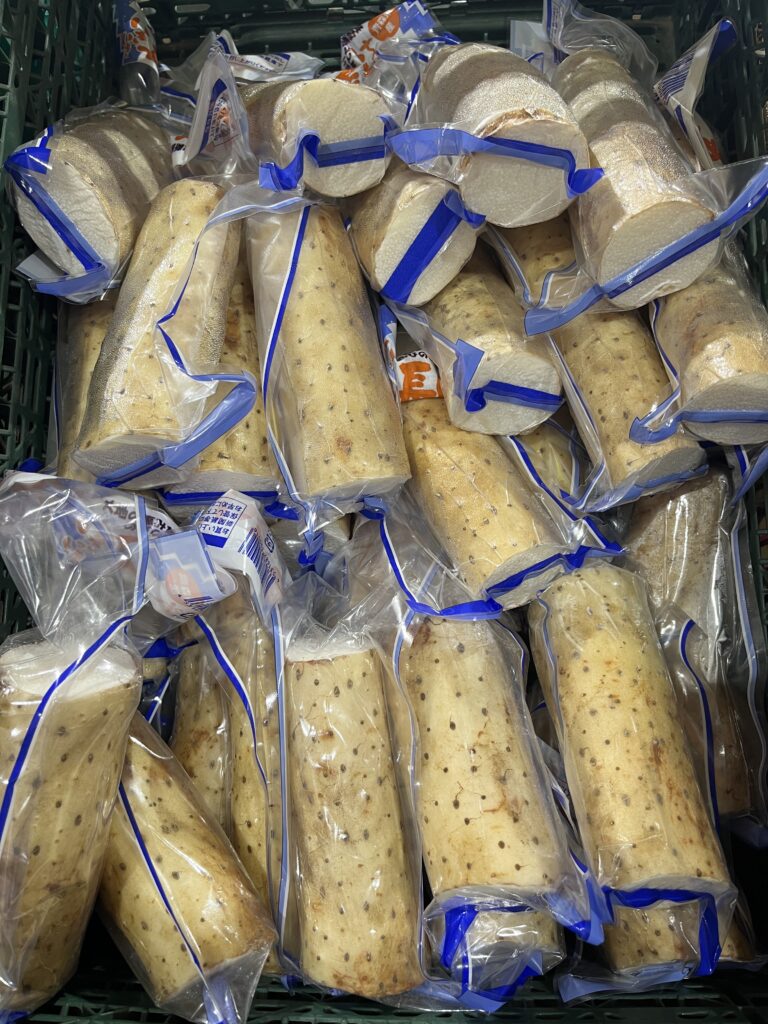
Neba-neba is the Japanese word for things which has the same sliminess as natto. It is an onomatopoeic word for slimy stretchiness. While it is most commonly applied to natto, you will also find it on menus of restaurants in summer.
Cold neba-neba soba noodles are a common dish, the noodles covered with the slimy ingredients, which apart from natto contain Mozoku (もぞく) or Mekabu (めかぶ) seaweed, okra, and ”Nagaimo”, a root vegetable which can become several meters long when cultivated, but becomes slimy when cut. Fried or grilled, it becomes something different, the nutty taste and crisp texture enhanced by the heat, the sliminess disappearing completely.
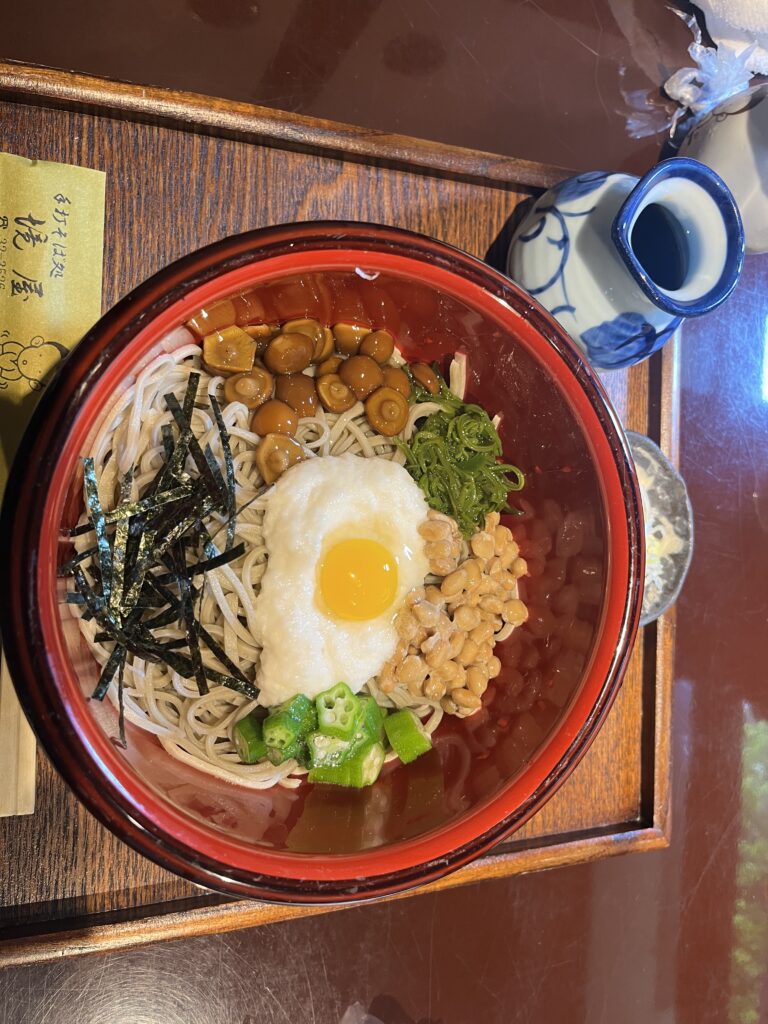
The neba-neba-soba, however, come presented in a bowl on top of the greyish-purplish noodles. This can be so exquisitely done that you feel bad about eating them, more so to mix everything up (whip it! Whip it good!) but that is what you are supposed to do. Add a little of the soba sauce and a bit of the green paste you hot either at the side of the dish or on top of it. That is wasabi and it is spicy if you take too much, but add just enough and the other ethereal oils than mustard oil that were released when the wasabi root was grated will take precedence and enhance the taste aromatically.
Okinawan Slimy Seaweed
In summer, this becomes very refreshing once you get past the sliminess. The tartness of the buckwheat compliments the nuttiness and fruitiness of the other ingredients perfectly.
The seaweed in the Neba-Neba Soba or salad comes from Okinawa, and is not slimy when it is fresh from the sea (if you are in Okinawa, try mekabu tempura). Both Mozoku and Mekabu are cultivated, and often credited as superfoods, part of the secret behind Okinawan longevity (and, with even less scientific proof, happiness).
But as it is packed and shipped to the mainland, the sliminess sets in. Mozoku is usually vinegared when shipped, while Mekabu is usually natural; both are popular as a compliment to natto, apart from being served in Neba-Neba salads or soba. You will sometimes find it next to the natto (which is next to the tofu), but usually it is in the seafood department.
African Slimy Vegetables
Okra adds green to the Neba-Neba mix, and is very popular in Japan. Originally from Africa, it takes well to the Japanese climate and is cultivated in family gardens as well as commercially. The okra season lasts from July to September, overlapping the hottest part of the year, when eating cold dishes is much less straining than hot.
The reason for the popularity of okra in Japanese cuisine is largely its sliminess. When you cut the pods, they become slimy in exactly the same way as nagaimo. The taste is also fresh, adding a dimension to the nuttiness of the other ingredients.
Slimy Yellow Mushrooms
There is one more slimy ingredient of Japanese cuisine, but it is usually used in miso soup (where you can occasionally find okra as well). It is Nameko (なめこ), a small yellow mushroom cultivated in the same way as shimeji, which means it is commonly sold in packets with a common mycelium and several mushrooms sprouting from it. This is a different species and when cut it becomes slimy, but as Japanese rarely eat raw mushrooms, you will not find Nameko in the Neba-Neba salad. Or Neba-Neba Soba.
Related Articles
Warning: Undefined array key "sfsi_threadsIcon_order" in /home/veremosglobal/tokyoroomfinder.com/public_html/blog/wp-content/plugins/ultimate-social-media-icons/libs/controllers/sfsi_frontpopUp.php on line 165
Warning: Undefined array key "sfsi_blueskyIcon_order" in /home/veremosglobal/tokyoroomfinder.com/public_html/blog/wp-content/plugins/ultimate-social-media-icons/libs/controllers/sfsi_frontpopUp.php on line 170
Warning: Undefined array key "sfsi_bluesky_display" in /home/veremosglobal/tokyoroomfinder.com/public_html/blog/wp-content/plugins/ultimate-social-media-icons/libs/controllers/sfsi_frontpopUp.php on line 266



